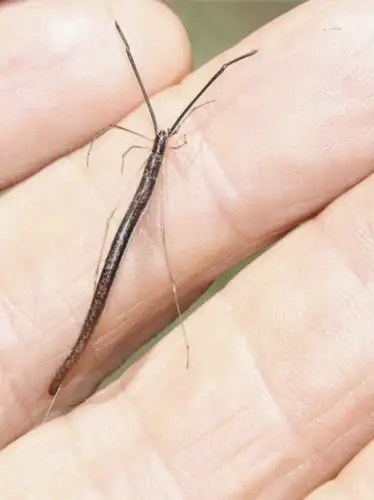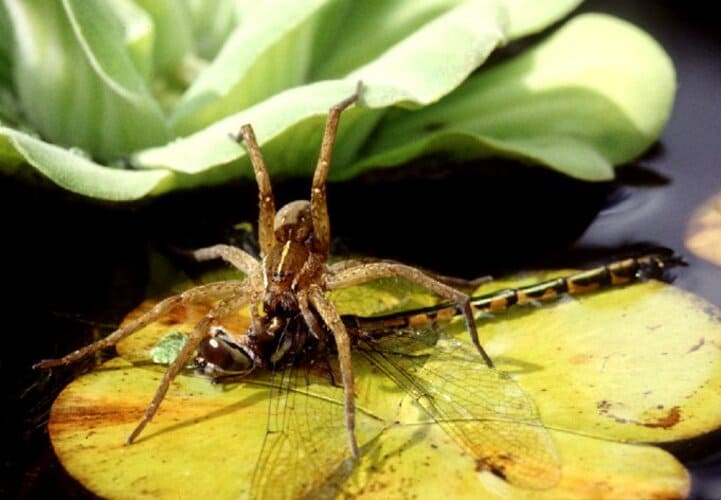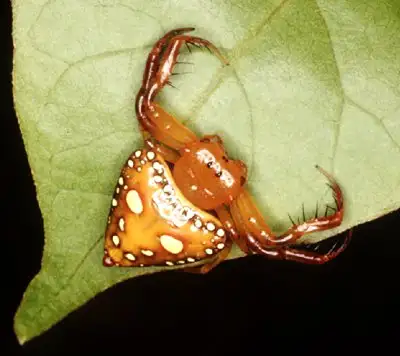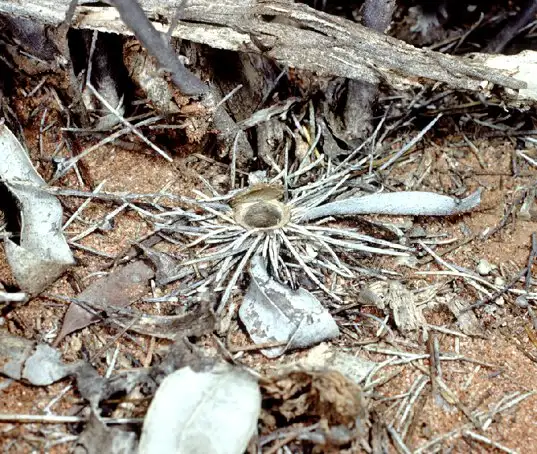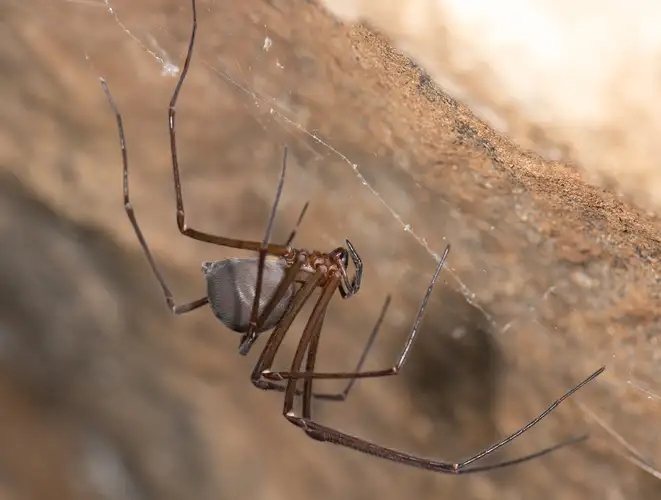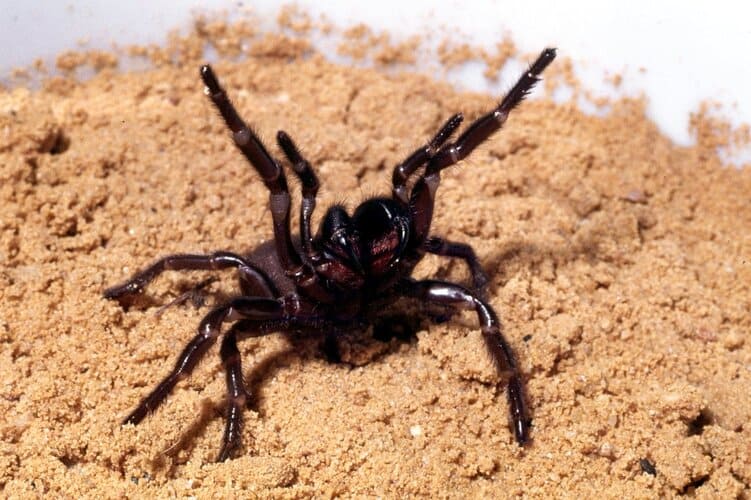Tube Spiders
IUCN
LCBasic Information
Scientific classification
- name:Tube Spiders
- Scientific Name:Primarily family Segestriidae and related tube-dwelling spiders
- Outline:Arthropoda
- Family:Segestriidae Tube spiders
Vital signs
- length:Most tube spiders are about 8–20 mm in body length, with some species slightly larger
- Weight:Light-bodied; generally tens to a few hundred milligrams depending on species and individual
- lifetime:Typically around 1–3 years, with females often remaining in the same tube retreat for long periods
Feature
Tube-dwelling spiders that build silk-lined retreats in cracks and ambush prey from the entrance rather than using large aerial webs.
Distribution and Habitat
Temperate and subtropical regions worldwide in rock piles, stone walls, tree bark crevices and garden structures near the ground.
Appearance
Moderately elongated brown or grey-brown spiders with well-developed legs and a tubular silk retreat in rock, bark or masonry crevices.
Details
Tube spiders is a common name for spiders that build tube-like silken retreatsin cracks, under stones or behind bark and then wait at the entrance to ambush passing prey. In arachnology the term most often refers to tube-web or tube-dwelling spiders in families such asSegestriidae, so this article treats “tube spiders” as a general group of spiders with this lifestyle.
Basic Biology
Representative taxonomic scope: Mainly family Segestriidae and related tube-dwelling spiders
Common English names: Tube Spiders, Tube-web Spiders
Body size: Typically medium to small ground spiders, about 8–20 mm in body length, with some species reaching slightly larger sizes.
Life span: Many species live around 1–3 years, with females often occupying the same tube retreat for long periods.
Appearance
The appearance of tube spiders varies among species, but they share several general features:
Body form: Moderately elongated bodies with well-developed legs, suited to rapid movement forwards and backwards inside the silk tube;
Colouration: Usually brown, grey-brown or dark brown with subtle markings that blend in with bark, rock or masonry;
Eye arrangement: Many tube-web spiders have characteristic eye patterns (in Segestriidae often six or eight eyes in a curved or horseshoe-shaped row);
Silk tube: A tubular or sac-like silken retreat built in a crack, beneath stones or behind bark, with the front end at the surface and silk lines extending outward as “trip wires”.
Unlike orb-weavers that rely on large aerial webs, tube spiders behave more like “doorstep ambush predators”, rarely leaving the immediate area of their retreat.
Tube Retreats & Hunting Strategy
The name “tube spiders” comes from their tube-shaped silk retreats. A typical tube spider constructs a silk-lined tunnel in a narrow crevice:
The inner walls of the tube are reinforced with layers of silk, making a durable shelter;
Short strands of silk extend from the entrance across the surrounding rock or bark, acting as trip lines;
During the day the spider usually stays deep inside the tube, while at night it rests near the entrance with its front legs touching the signal threads.
When an insect or other small arthropod touches these trip lines, vibrations travel back to the spider. It then rushes out of the tube, grabs the prey with its front legs and fangs, and drags it back into the retreat to feed.
Distribution & Habitat
Tube spiders occur in many temperate and subtropical regions around the world. They are recorded from Europe, Asia, the Americas and Australia, with some related tube-dwelling species also present in tropical forests and montane habitats.
They are typically found in:
Rock piles, stone walls, retaining walls and crevices in old buildings;
Cracks in tree trunks, beneath loose bark and in cavities within fallen logs;
Gaps between garden stones, steps and edging in parks and backyards;
Occasionally in gaps on balconies, fences or under eaves around houses.
These spiders prefer shaded, sheltered and slightly humid microhabitats close to the ground, which are also favoured by many of the insects they hunt.
Diet & Ecological Role
Tube spiders are classic sit-and-wait predators. Their diet usually includes:
Ants, beetles, small cockroaches and other ground-dwelling insects;
Other spiders and a variety of small arthropods that pass near the tube entrance;
Occasionally small vertebrates of similar size, such as tiny lizards or frogs, in the case of larger species.
By preying on many ground-dwelling invertebrates in cracks and stone piles, tube spiders contribute to natural pest controland are important predators in nocturnal arthropod communities.
Venom & Human Significance
Most tube spiders have venom that is effective on insect prey but mild to humans. Documented bites are relatively rare, as these spiders tend to stay within their retreats and do not actively roam indoors.
Reported bites generally cause only local pain, slight swelling or itching. Standard advice is to wash the area, apply a cold compress if needed and seek medical attention if symptoms are severe, persistent or occur in children or allergy-prone individuals.
Interactions with People
Tube spiders are unobtrusive residents of walls, rocks and tree trunks, and they seldom come into direct contact with people. In gardens and urban green spaces they act as quiet allies, helping to reduce numbers of insects and other small arthropods.
If a tube retreat is found in a place where it causes concern, the structure (stone, piece of bark, etc.) can be carefully moved to a more suitable location in the garden rather than using insecticides, which also protects other beneficial invertebrates。
FAQ
Q1. Are tube spiders a single species?
No. “Tube spiders” or “tube-web spiders” is an informal name for spiders that build tube-like silk retreats and hunt from
their entrances, mainly in the family Segestriidae and some related groups.
Q2. Do tube spiders come indoors?
They prefer outdoor cracks, rocks and bark. While they may occasionally occur around buildings, they rarely establish themselves
inside living spaces.
Q3. Are tube spiders dangerous to humans?
Most tube spiders are not considered medically important. Their venom is adapted to subdue insect prey, and recorded bites usually
result in only mild, local symptoms.
Q4. Should I remove tube spiders from my garden walls?
In most cases there is no need. They help control insect populations and are part of the natural fauna. If a particular tube is in an
inconvenient place, gently relocating the stone or bark that contains it is usually sufficient。


